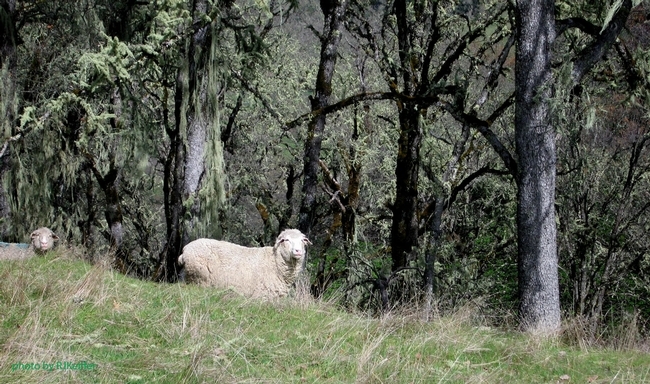
At the UC Hopland Research and Extension Center, we are braced for our first winter under a new policy that minimizes the use of lethal control against native wildlife that prey on our lambs and ewes. As director of the 5,300-acre Mendocino County research facility, I'm nervous for the well-being of our 500 sheep and lambs soon to be born.
The animals are defenseless, therefore it is our responsibility to protect them from predation by wildlife or other animals, such as domestic dogs. Many non-lethal methods of protecting the sheep have been implemented over the past several months. We installed and repaired fences and brought in five new guard dogs to protect the sheep.
Our new practices seemed to work last spring and summer. We can't draw research conclusions from one year of data, but the number of sheep confirmed killed by wild carnivores in 2015 was much smaller than the year before, 10 vs. 48. And the number of coyotes taken so far in 2014 – 15 – was about half the amount in 2014.
I'm encouraged by the numbers. But we want to do better. As a University of California research center, Hopland is the ideal place to study ways for sheep ranchers throughout Northern California to maintain sustainable flocks even in the presence of the growing, and increasingly diverse, wildlife population. At Hopland, we are interested in learning more about how to prevent conflicts with wild animals and reduce the need for lethal control of wildlife. This information will inform policies for wildlife control in cities, rural areas and on ranches.
The Hopland REC was a working sheep ranch when it was purchased by the UC Division of Agriculture and Natural Resources for rangeland and animal management research in 1951. From the 1990s to the 2000s, 10 to 15 percent of lambs or more were killed each year by predators – mainly coyotes – despite aggressive non-lethal and legal lethal control, according to Bob Timm, a UC Cooperative Extension specialist who served as director of the station for 30 years before retiring in 2014.
We will always have predators threatening our sheep. We need research-based information to inform us how to deal with them humanely while maintaining economically viable ranching operations in Mendocino County and throughout California.
Justin Brashares, a professor of wildlife ecology at UC Berkeley, has developed a research plan for the center. We are seeking funding and, in the coming years, will use Hopland as a living laboratory to answer many questions scientists and ranchers have about wildlife in Northern California. The research will help us estimate the wildlife population. We plan to use high-technology GPS collars on prey and predator species to develop very fine-scale information about their interactions. Hopland will also be a site to study the very fencing we and other sheep producers are earnestly installing to protect our sheep from hungry carnivores.
I believe we are lucky to have the wildlife among us. I'm committed to helping our community protect wildlife and raise sheep with research and education programs at Hopland.
We will always have predators threatening our sheep. We need research-based information to inform us how to deal with them humanely while maintaining economically viable ranching operations in Mendocino County and throughout California.